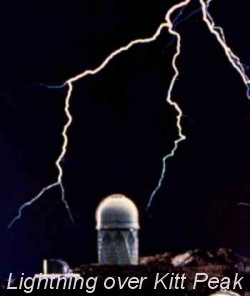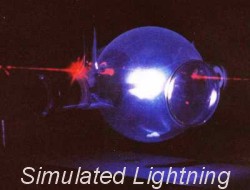 Lubricants play a great role in today's world. The working lifetime of
a lubricant is determined by how resistant it is to oxidation in the
harsh
environment in which it functions, for example, the very hot piston
assembly of an automobile engine.
Lubricants play a great role in today's world. The working lifetime of
a lubricant is determined by how resistant it is to oxidation in the
harsh
environment in which it functions, for example, the very hot piston
assembly of an automobile engine.

The study of how hydrocarbons react is of great relevance in today's world. For instance, hydrocarbon based lubricants are used in virtually all machinery, from jet engines to computer hard drives, and the useful lifetime of the lubricant is determined by how fast it degrades in its working environment, what deleterious oxidation products are formed and how the physical properties of the lubricant change with age. We are involved in the study of the degradation of lubricants used in automobile engines, and are interested in finding the dominant chemical mechanisms involved, as well as the physical conditions that lubricants are subjected to in engines, with a view to improving the lifetime of the lubricants. We are also investigating the degradation of polyol ester lubricants, which are of great interest because of their combination of high performance, biodegradability, and their possible manufacture from bioproducts.
Fundamental work on the reaction of hydrocarbons with free radicals formed during oxidation is also being investigated. The addition of oxygen centred radicals to alkenes is a subject of great relevance to both combustion and atmospheric chemistry, as well as the degradation of unsaturated biolubricants; this has been investigated experimentally and theoretically.
Another possible application of this work on the reaction of alkenes is the commercial manufacture of propene oxide via the uncatalysed gas-phase autoxidation of propene.
Finally, how air is chemically transformed by lightning has been looked into. This is because of the need to know how nitrogen oxides are formed by lightning, which is thought to be one of the main natural sources of fixed nitrogen for the biosphere.
 Lubricants play a great role in today's world. The working lifetime of
a lubricant is determined by how resistant it is to oxidation in the
harsh
environment in which it functions, for example, the very hot piston
assembly of an automobile engine.
Lubricants play a great role in today's world. The working lifetime of
a lubricant is determined by how resistant it is to oxidation in the
harsh
environment in which it functions, for example, the very hot piston
assembly of an automobile engine.
Therefore, in collaboration with industrial sponsors Shell, Infineum
and Castrol,
the dominant mechanisms involved in the chemical degradation of
hydrocarbon
and polyol ester lubricants have been investigated, with a view to
extending the lifetime and performance of these oils.
polyol ester oxidation [Lindsay Smith et
al
2004]
methyl ester oxidation [Stark et
al2006]
hydrocarbon oxidation
[Stark et al
2006]
[Stark et al
2005]
[Wilkinson et
al
2004]
[Gillespie et al
2001]
[Lindsay
Smith et al 2001]
Also, the rate at which a lubricant degrades in an engine is very strongly dependent on how long it spends in the very hot piston assembly, and how fast if flows through. These physical parameters that the oil is exposed to have recently been measured for the first time by us for a gasoline engine. [Stark et al 2006] [Stark et al 2005a] [Stark et al 2005b] [Stark et al 2004] [Stark et al 2004] [Hammond et al 2002]
The oxidation of an engine lubricant can result in an increase in its viscosity, and this in turn can lead to a reduction in the efficiency of the engine. This topic has been investigated and a model is being constructed that describes the effect. This has been achieved by combining a chemical model for the degradation of the lubricant, a rheological model for how the oxidation products affect the viscosity, and a tribological model that describes the change in piston friction with increase in lubricant viscosity. [Hammond et al 2003]
Understanding how hydrocarbons undergo oxidation has become a major concern in today's world. For example, by understanding the mechanism by which different fuels are attacked by free radicals during combustion, the fuel efficiency of automotive engines has been increased in recent years. Likewise, the damage that hydrocarbon pollutants cause in the urban troposphere is largely determined by how fast they are attacked by the free radicals present.
We have been involved in investigating one class of radical-hydrocarbon reactions in particular, the addition of peroxyl radicals to carbon-carbon double bonds. These reactions play a role in the combustion of fuels at relatively low temperatures (< 800 K) and are involved with the phenomenon of 'knock' in petrol engines and in autoignition in diesel engines.
It has been known for some time that peroxyl radical addition to alkenes was the rate determining step in the formation of the resultant epoxide (k-1 << k2), and the rate of reaction increased the lower the ionisation energy of the alkene.

 It was also found that the rate of reaction of peroxyl
radicals with
alkenes increased with increasing electron affinity of the attacking
radical.
The dependences of rate on Ialkene and Aradical
both
suggest that this reaction is an electrophilic addition, involving a
degree
of charge transfer to the radical (ROO-..+C=C)
[eg. Ruiz Diaz et al, 1977].
It was also found that the rate of reaction of peroxyl
radicals with
alkenes increased with increasing electron affinity of the attacking
radical.
The dependences of rate on Ialkene and Aradical
both
suggest that this reaction is an electrophilic addition, involving a
degree
of charge transfer to the radical (ROO-..+C=C)
[eg. Ruiz Diaz et al, 1977].
This behaviour can be described quantitatively by estimating the charge transfer that occurs during the addition, and it turns out that this charge transfer is the dominant (if not the only) factor in controlling the rate of reaction [Stark, 1997][Stark, 2000]. This charge transfer for the reaction, which is easily estimated using ab initio quantum chemistry techniques, allows a straightforward way of estimating rates of reaction that have not yet been measured in the laboratory. This also demonstrates that all the alkene epoxidation reactions that have been examined share a common behaviour.
Recently, it has become apparent that only unsubstituted alkenes behave as described above; functional groups substituted directly onto the double bond can greatly affect the rate of reaction. For example, acrolein (propenal) is epoxidised by acetylperoxyl radicals far faster than would be expected by comparison with normal alkenes [Roden et al, 1999 and 1996]. Such conjugated unsaturated aldehydes are important partially oxidised products of alkene oxidation [Stark and Waddington, 1995], so this anomalous behaviour will have ramifications for hydrocarbon oxidation in general.
For the future, we are trying to gain a quantitative understanding of the epoxidation of substituted alkenes, as well as trying to gain some insight into the mechanism of radical addition to alkenes in general.
In collaboration with industrial sponsors, Olin Chemicals and AG Bayer, we have studied in depth the autoxidation of propene [Stark and Waddington, 1995], for as well as helping to clarify this important sub-mechanism of hydrocarbon fuel oxidation, this reaction has the potential to provide a new route for the commercial manufacture of propene oxide [Pennington et al, 1995], which is a very significant intermediate in the chemical industry.
 The production of nitrogen oxides (mostly
nitric oxide, NO) by lightning is
thought to be a very significant source of these key, fixed nitrogen
species for the biosphere.
Early theories about how atmospheric electrical discharges produce NO
suggested that the enormously powerful shock waves generated by the
discharges (audible as thunder), could heat air to sufficiently high
temperatures (>2000 K) to dissociate O2 and consequently
form NO.
The production of nitrogen oxides (mostly
nitric oxide, NO) by lightning is
thought to be a very significant source of these key, fixed nitrogen
species for the biosphere.
Early theories about how atmospheric electrical discharges produce NO
suggested that the enormously powerful shock waves generated by the
discharges (audible as thunder), could heat air to sufficiently high
temperatures (>2000 K) to dissociate O2 and consequently
form NO.
However, a rival theory was subsequently proposed that suggested that NO was actually formed in the slowly cooling remnants of the exceedingly hot (ca. 10,000 K) but very tenuous gas left over after the passage of the electrical discharge and departure of the shock front.
In essence, the debate was whether NO was formed by Thunder or Lightning.
 This topic was investigated here by firing a controlled electrical
discharge in a reaction vessel while simultaneously measuring both the
yield of NO and the speed of the shock front generated by the
discharge.
The speed of the front was found by measuring the time between firing
the discharge, and the deflection by the shock wave of a laser beam
that was a known distance away.
This topic was investigated here by firing a controlled electrical
discharge in a reaction vessel while simultaneously measuring both the
yield of NO and the speed of the shock front generated by the
discharge.
The speed of the front was found by measuring the time between firing
the discharge, and the deflection by the shock wave of a laser beam
that was a known distance away.
High yields of NO were detected, while simultaneously, it could be shown that the shock fronts never ever went fast enough, and consequently never got hot enough, to fix nitrogen. [Stark, Harrison et al. 1996]
Therefore, in the laboratory, and most likely in the atmosphere too, NO is formed by Lightning and not thunder.